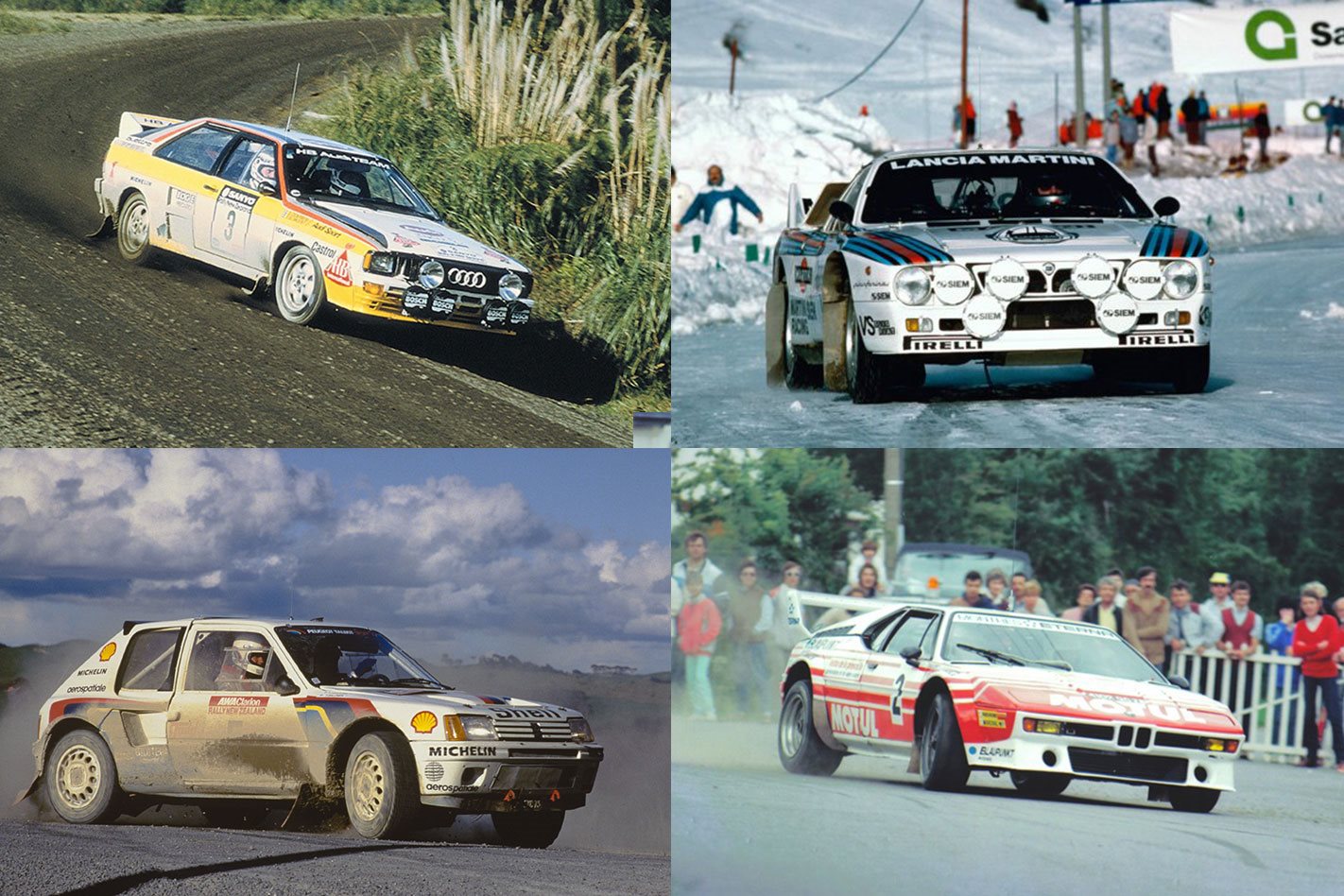The Group B era of rallying is remembered as one of the craziest times for one of the world’s craziest motorsports.
The freedom of the technical regulations and the requirement to only build a very limited number of homologation cars led to an incredible rate of development and fans flocked in their millions to hillsides and villages all over the world to watch these monsters.
To celebrate we’ve put together a four-part series examining the cars of this incredible era. Why now? Well, 2016 marks the 30th anniversary since Group B’s demise, while 2017 will usher in a new era of rallying supercars as the WRC opens up its regulations once again.
Group B was introduced in 1982 and our first part looks at the cars competing during its first three years. We’ve trawled the internet to find the best videos that hopefully give you a taste of just how spectacular each of these machines was at maximum attack.
Audi Quattro – 2.1-litre 5cyl turbo, 225-300kW, 19 wins (1982-84)
The Audi Quattro turned rallying on its head thanks to its adoption of all-wheel drive. Initially, rivals thought the system would be too complex and heavy, but it soon became clear that the future was four-wheel drive.
However, Audi largely squandered its technical superiority. Wins were frequent, but with the heavy turbo five-pot slung ahead of the front axle, its handling wasn’t great, and as power was increased to compensate (to around 300kW by the end of 1984) reliability began to suffer.
Nonetheless, Hannu Mikkola won the driver’s title in 1983 while Stig Blomqvist backed this up in 1984 by shunning the troublesome short-wheelbase Sport Quattro and sticking with the tried-and-tested A2.
The video above is current VW WRC driver Jari-Matti Latvala in his Audi Quattro A2 that he drives in historic events when he’s not piloting his Polo WRC.
BMW M1, 3.5-litre 6cyl N/A, 300-320kW, 0 wins (1982-84)
An exotic sideshow on early Group B tarmac events were supercars like the Porsche 911 SC, Ferrari 308 and the BMW M1. Unfortunately, none really tasted success on the world stage, but they brought some welcome glamour to the stages and sounded sensational to boot.
With between 300-320kW from its 3.5-litre straight-six, the BMW M1 was the most powerful rally car in the world in the early 1980s and was driven with some success in the French Rally Championship.
Lancia 037 Rallye, 2.0/2.1-litre 4cyl s/c, 190-260kW, 6 wins (1982-84)
The last competitive rear-wheel drive WRC car, the Lancia 037 may have been technically outgunned by the Quattro but its drivers, legends like Markku Alen, Walter Rohrl and Henri Toivonen, absolutely loved it.
Its mid-engined layout and lithe 960kg kerb weight made it incredibly agile, while the 2.1-litre supercharged four-cylinder had none of the Audi’s turbo lag and delivered up to 260kW at 8000rpm in its final iterations.
Combined with the tactical mastery of team boss Cesare Fiorio (who masterminded mid-stage pit stops and salted roads to clear them of ice in an effort to offset the Quattro’s traction advantage) Lancia beat Audi to the manufacturer’s title in 1983.
Mazda RX-7, 13B twin-rotor, 220kW, best of 3rd (1985 Acropolis)
The Mazda RX-7 only appeared on three rounds of the 1984 and 1985 WRC seasons and certainly didn’t trouble the podium on any occasion, however it’s worth mentioning for the noise and the spectacular manner in which it was driven. Check out the video to see what we mean.
Nissan 240RS, 2.4-litre 4cyl N/A, 180-207kW, best of 2nd (1983 New Zealand)
Nissan took a tortoise rather than a hare approach to Group B, its 240RS way off the ultimate pace but very reliable. This paid dividends with a number of podium results in the African endurance events, although second place in the 1983 Rally of New Zealand proved it wasn’t totally without pace.
Opel Manta 400, 2.4-litre 4cyl N/A, 210kW, best of 2nd (1984 Safari)
Like Nissan, Opel totally underestimated the rate with which the turbocharged, four-wheel drive monsters would develop. As such, its rear-wheel drive Manta 400 was quickly outpaced but proved a popular and spectacular national rally contender.
Its predecessor, the Ascona 400, will also in all likelihood forever be the last rear-wheel drive car to win the WRC thanks to Walter Rohrl, who staged a fierce season-long battle with Michele Mouton.
Peugeot 205 T16, 1.8-litre 4cyl turbo, 260-280kW, 3 wins (1982-84)
Peugeot’s 205 T16 may not have changed rallying as radically as Audi’s Quattro, but by combining the German machine’s turbocharger and all-wheel drive with the Lancia’s light weight and mid-engined layout it proved utterly unbeatable.
Ari Vatanen easily won three of the last four rallies of 1984, setting up a period of dominance under future Ferrari F1 boss Jean Todt that would force other manufacturers to raise their game, igniting an arms race that would lead to some of the most spectacular race cars of all time.
Renault 5 Turbo Maxi, 1.4-litre 4cyl turbo, 155-260kW, 2 wins (1982-85)
Impossible weight distribution, tiny 1.4-litre engine, the Renault 5 Maxi Turbo should not have worked as a rally car, but it did. Tamed by the incredible Jean Ragnotti, the diminutive Renault’s wins were few and far between, but both were giant-killing exercises of the highest order.
Packing 154kW, the car won on its debut at the 1981 Corsican rally, beating the second-placed Ferrari 308 by more than five minutes, however Ragnotti needed more than 260kW to repeat the trick four years later.






